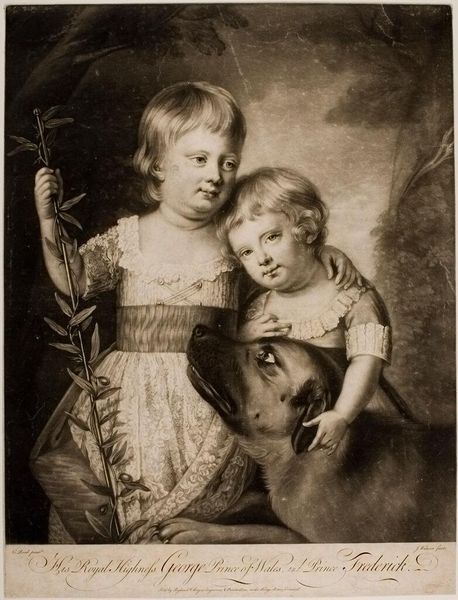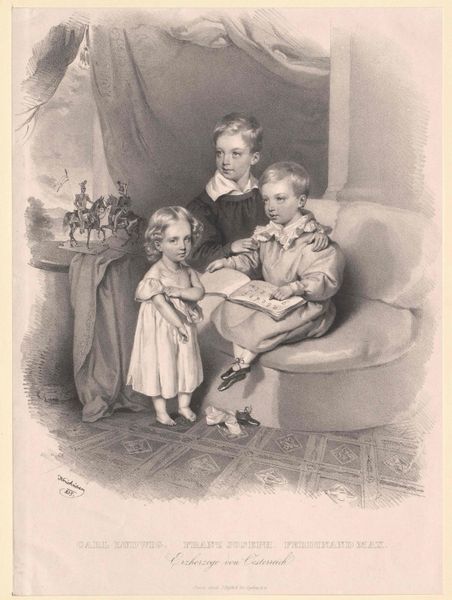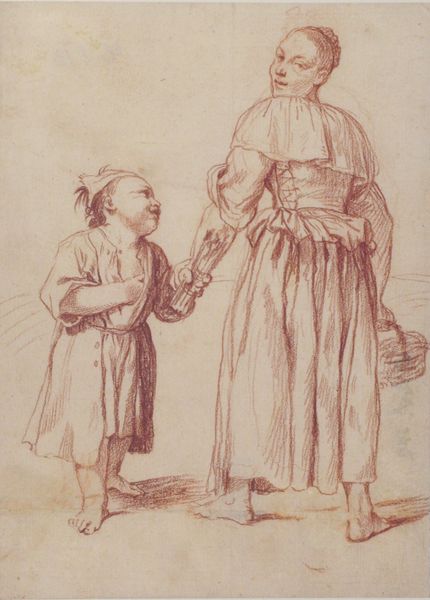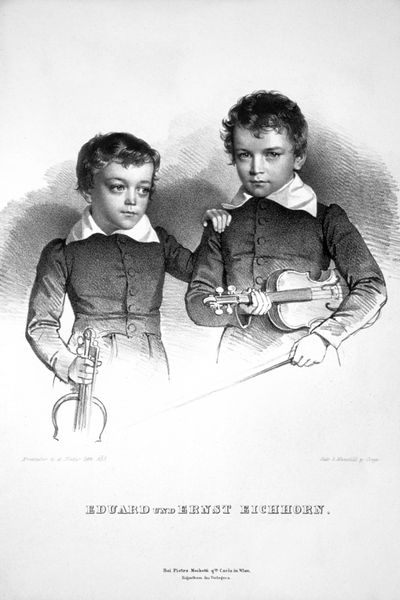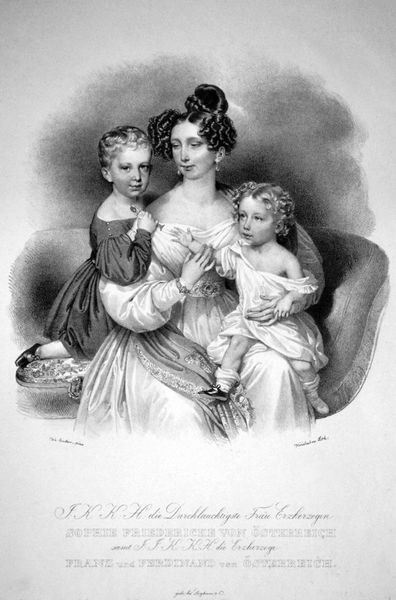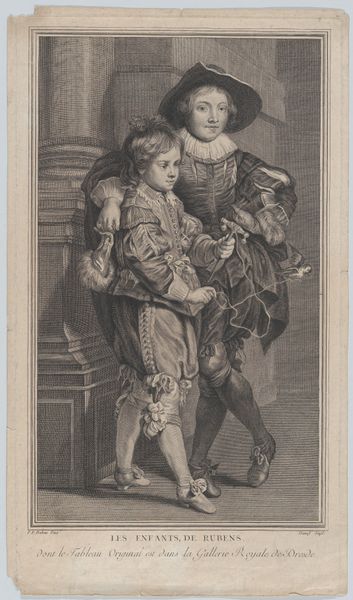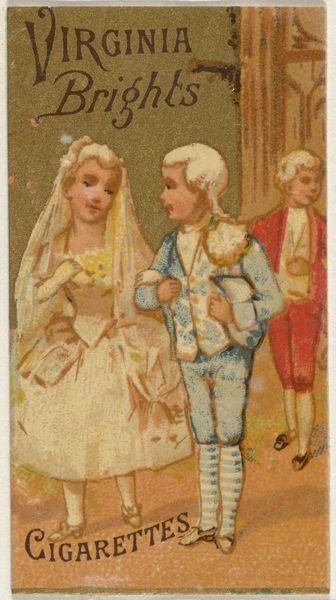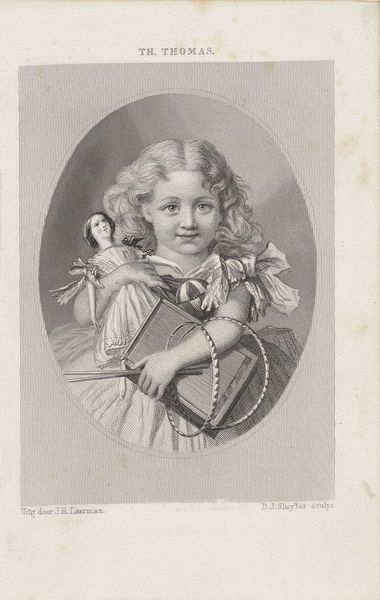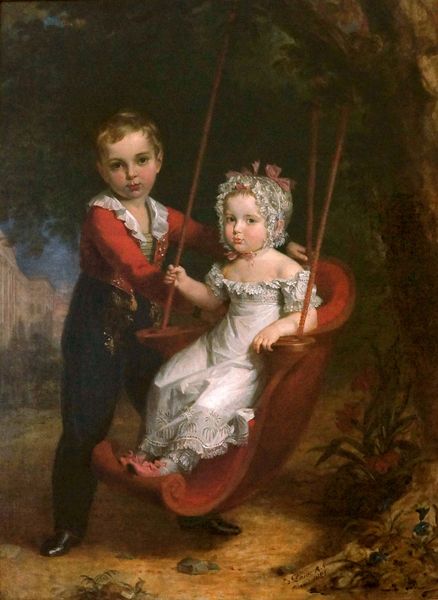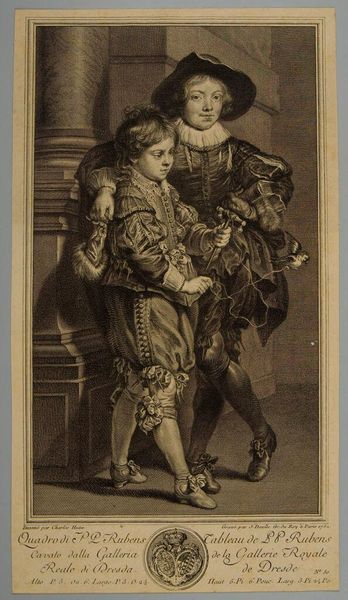
drawing, print, graphite
#
portrait
#
drawing
#
portrait image
# print
#
romanticism
#
graphite
#
genre-painting
#
academic-art
#
graphite
Copyright: Public domain
This lithograph of Rudolf and Emmerich Count Chiotek von Chotkowa and Wognin was made by Josef Kriehuber in the 19th century, using a printing process that allowed for relatively quick and cheap reproduction. The lithograph technique involves drawing on a flat stone surface with a greasy crayon, then treating the stone so that ink adheres only to the drawn areas. This printmaking method democratized image production. Lithography allowed for the easy circulation of images, shaping public opinion, and creating a shared visual culture. It moved image-making away from unique artworks, towards mass-produced images as commercial products. The image captures the dress, leisure, and social values of the time. Notice the detail in the clothing, the toy goat, and the overall composition. The lithographic process, with its capacity for nuanced shading, conveys the soft textures and subtle gradations of light and shadow that bring the scene to life. Understanding the material and social context is essential to appreciating not just the image, but the implications of its making. The means of production are as important as the result.
Comments
No comments
Be the first to comment and join the conversation on the ultimate creative platform.
